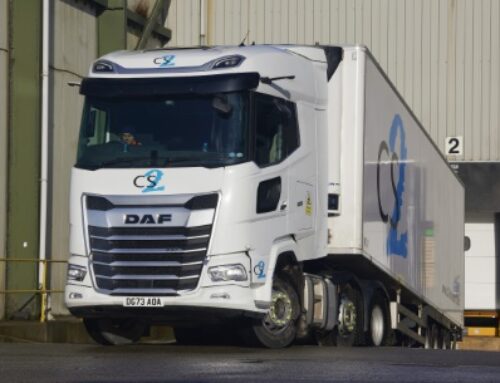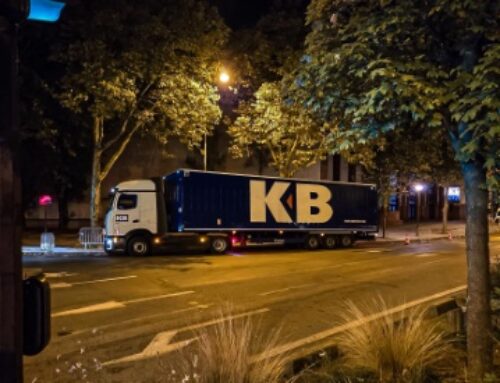Diesel engines to get leaner and meaner
 The next generation of truck engine designs will be focused on reduced fuel consumption rather than reducing toxic emissions much below the low levels already being achieved at Euro 6. That was the message at a Technology Day hosted by leading automotive engineering supplier Federal-Mogul, at its bearing plant in Wiesgaden, Germany.
The next generation of truck engine designs will be focused on reduced fuel consumption rather than reducing toxic emissions much below the low levels already being achieved at Euro 6. That was the message at a Technology Day hosted by leading automotive engineering supplier Federal-Mogul, at its bearing plant in Wiesgaden, Germany.
As a supplier of components ranging from plain bearings to pistons, Federal-Mogul is one of the leaders in developing designs and materials to help truck manufacturers achieve this goal.
Wiesbaden is the biggest bearing factory in the world and produces 16,000 km of bearing strip material each year. Federal-Mogul claims it supplies components to every engine manufacturer in the world.
Better fuel economy will be produced by making smaller and lighter engines without compromising durability, and also by changing their operating cycles: for example, intermittent combustion engine running on hybrids. Manufacturers are also more likely to demand alternative fuel capability, meaning spark ignition gas engines.
One of the biggest challenges to Federal-Mogul’s bearing development department is the lowering of specified oil viscosity by engine manufacturers. This is done in the interests of fuel economy, but the resultant reductions in oil film strength mean that bearings have to be made more durable. The general trend to downsize engines also means temperatures increase, while the stop-start cycles (typically 1.2 million in the life of a hybrid vehicle) also impose higher stress on bearings.
At one end, material choice is being constrained (bearings in light vehicles are already lead-free to aid recycling), and Federal-Mogul is developing suitable new materials for heavy duty application. Thanks to this, it said, at least one of its heavy duty clients has already been able to go lead-free.
The quest for improved fuel consumption has seen peak combustion pressures rise inexorably over the years, to the point where peak pressures can now exceed 250 bar, and in experimental engines pressures of 300 bar are now being reached, causing heads to lift and bend. All of which places obvious stresses on head gaskets.
“The stability of the block/ head interface is critical,” said Andreas Paulisch, manager of engineering dynamic seal, unipiston and cold static gaskets. This is achieved in part by separating the combustion sealing function from the fluid sealing function of the gasket. The combustion chamber is sealed with a triple layer of sprung steel while the other side of the gasket is an elastomer to seal the coolant passages.
Rising combustion temperatures also mean rising exhaust gas temperatures. “Turbo engines now have exhaust temperatures that can exceed 700 C, and standard steel and graphite gaskets will be destroyed by temperatures over 500 C,“ Mr Paulisch said.
Federal-Mogul has developed a range of high-temperature alloys and coatings that can withstand the brutal conditions in environments such as turbochargers, where fluctuating temperatures can reach levels of 1,000 C or more.
These loads will only rise as powertrain designers will increasingly seek to retain exhaust temperatures by insulation to enable the recovery of heat energy. Further shielding will be required to mitigate against the danger that these hot exhausts will pose to the external environment.
Internally, steel is gradually replacing aluminium as the optimum material for the pistons of heavy-duty diesel engines. Steel has, unsurprisingly, always been judged as more robust, and suitable for operation at higher temperatures and pressures than aluminium, but lacks the light weight and excellent heat conduction of that material. So traditionally steel is used in bigger-bore diesel engines.
Federal-Mogul uses an ingenious heat-treatment process on upper surfaces of its aluminium pistons to reduce their propensity to crack. Partially re-melting the piston’s surface in critical areas reduces the grain size of silicon particles to one-tenth of their original dimensions and significantly extends the fatigue life of a cast piston.
Consequently, the manufacturer claims that these DuraBowl pistons are suitable for pressures of up to 210 bar on current engines, with a development programme underway to go higher.
But inevitably, the rise in temperatures and pressures mean that steel pistons are becoming more popular in smaller bore sizes too. Federal- Mogul uses friction welding techniques to join skirts to crowns, and this will enable it, in the future to produce a piston with an enclosed cooling gallery that will contain a cooling fluid rather than relying on engine oil, in much the same manner that exhaust valves in race engines sometimes use sodium as a cooling medium.
Norbert Schneider, Federal- Mogul’s director of piston application engineering, informed Transport Operator that sodium would not be the substance used.
One trend from motorsport which Federal-Mogul definitely won’t be following is the move to ‘slipper’ pistons with ever shorter skirts in an attempt to reduce internal friction.
Mr Schneider points out that while their reduced contact area should reduce friction, the tendency of short pistons to rock in the bore means that extra material has to be added to regain piston stability above the ring lands, where more friction is proportionally generated. Federal-Mogul is instead using its expertise in low-friction coatings and piston rings to reduce bore friction.












